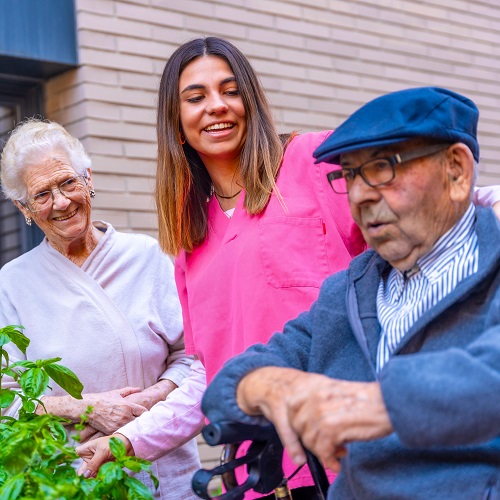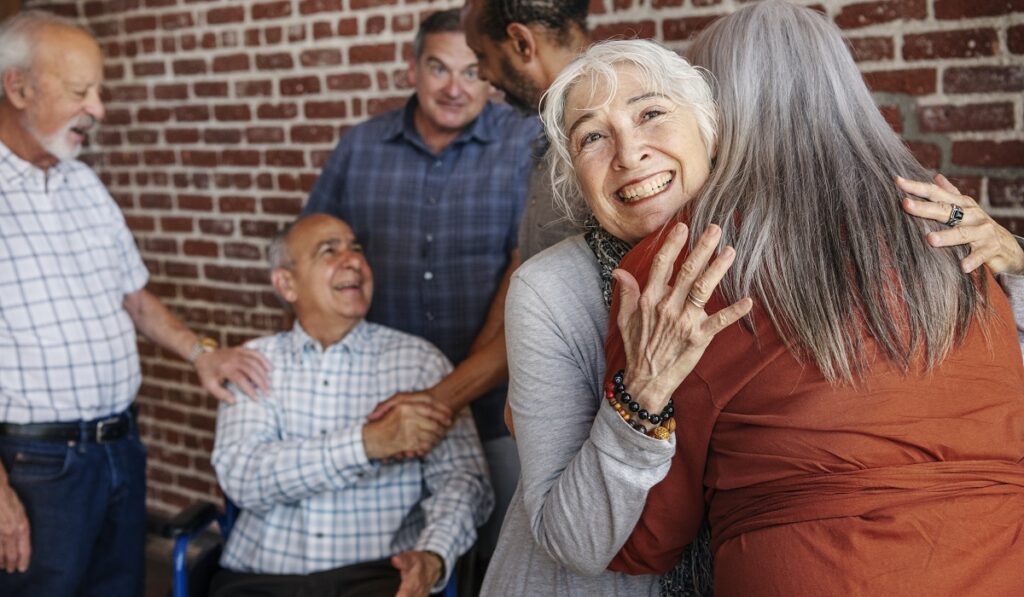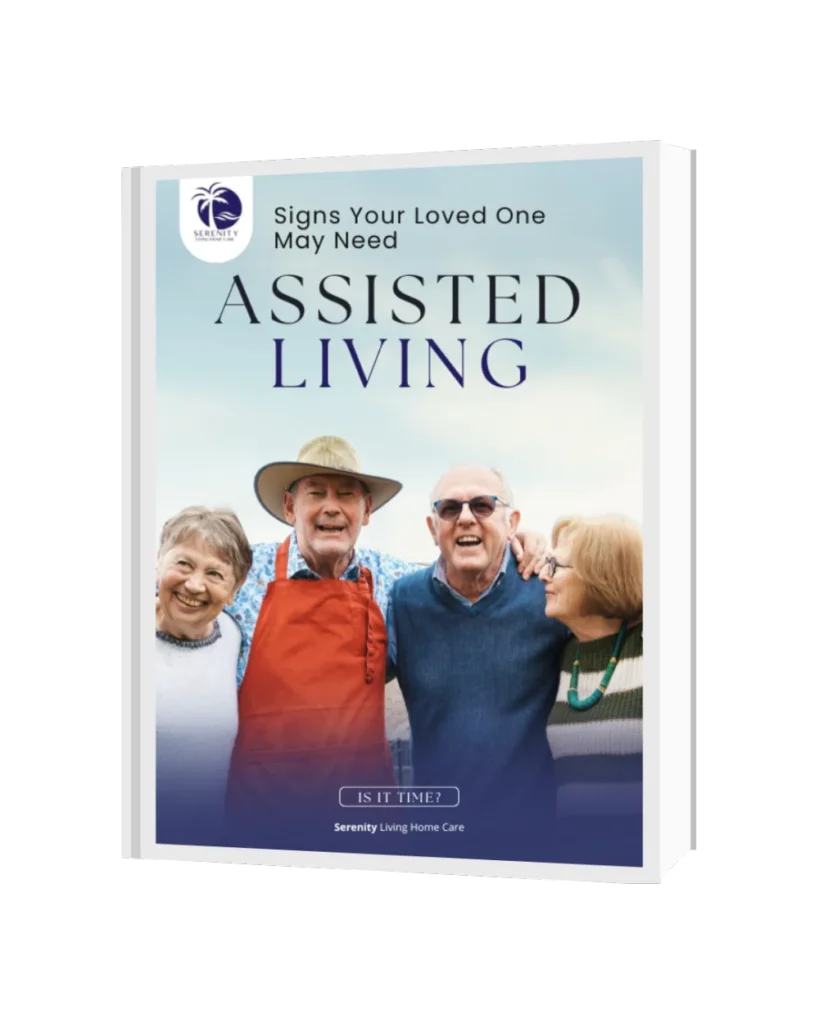For many families, the phrase “assisted living” can evoke a mix of questions and preconceptions. Is it merely a nursing home alternative, or a place where independence is surrendered? The reality is far more nuanced and, for countless seniors, profoundly transformative. Understanding what is assisted living for seniors means looking beyond preconceived notions to grasp the vibrant, supportive communities designed to empower older adults to live fulfilling lives while receiving the right level of support.
This comprehensive article provides a definitive look at the true experience, offering clarity, practical insights, and demonstrating why it’s a valuable option for aging loved ones.
Key Takeaways
- Assisted living offers personalized support for daily tasks while prioritizing independence.
- It provides a vibrant community atmosphere with opportunities for social engagement and connection.
- Residents benefit from 24/7 safety and security, bringing peace of mind to both seniors and families.
- Assisted living is distinct from both independent living (more support) and nursing homes (less medical focus).

What is Assisted Living for Seniors, Really?
For families, it is a definitive solution that brings profound peace of mind. It’s the assurance that a loved one is safe, nourished, and supported 24/7, alleviating the constant worry and burden of managing complex care needs from afar. It means knowing a parent or grandparent is thriving, not just surviving.
For seniors, it represents renewed control and genuine community. It’s the liberation from household chores and the anxiety of managing daily tasks, replaced by accessible assistance, purposeful engagement, and the chance to forge new friendships in a supportive environment. It’s about choosing where and how to live with dignity.
But for us at Serenity Living, it is a profound commitment to fostering individual dignity and joy. It is the active dedication to understanding each resident’s unique story and ensuring every day is filled with purpose and belonging. For us, it’s about providing not just care, but a true home where lives continue to flourish with respect and compassion.
According to the National Center for Assisted Living (NCAL), assisted living facilities consistently deliver high satisfaction among residents and their families, providing essential services in a home-like setting.
Daily Life and Community Connection
Life within an assisted living community is intentionally structured to foster deep connections and meaningful engagement, transforming a residence into a true home. It’s an environment where the challenges of isolated living are replaced by constant opportunities for social interaction and shared experiences. Residents frequently enjoy:
- Communal Dining: Mealtimes become social events, often in elegant, restaurant-style settings, where residents gather, converse, and build friendships over delicious, nutritious meals.
- Inviting Common Areas: Lounges, libraries, game rooms, beautifully maintained gardens, and activity centers serve as natural hubs for spontaneous conversations, shared hobbies, and relaxation.
- Organized Social Gatherings: The community calendar is typically brimming with diverse events, from lively movie nights and engaging card game tournaments to themed parties, holiday celebrations, and cultural presentations. These activities create a cohesive environment where everyone feels part of a larger, supportive family.
This vibrant, interactive atmosphere is central to what is assisted living for seniors—a place where the risks of loneliness and isolation are actively combated by genuine companionship, fostering a strong sense of belonging and well-being.
How Assisted Living Adapts to Individual Needs
A cornerstone of what is assisted living for seniors is its unwavering commitment to individualized care. This means that support is never one-size-fits-all; it’s meticulously tailored and flexibly adapts as each senior’s needs evolve over time. Core services typically include:
- Assistance with Activities of Daily Living (ADLs): Discreet and respectful help with personal care tasks such as bathing, dressing, grooming, toileting, and safe mobility. This support empowers residents to maintain hygiene and confidence.
- Instrumental Activities of Daily Living (IADLs): Practical support with everyday tasks like precise medication management and administration, thorough housekeeping, personal laundry services, and reliable transportation to doctor’s appointments or community outings.
- 24/7 Professional Oversight: Trained caregivers and staff are always present within the community, ensuring immediate assistance is just an emergency call away. This constant availability provides a critical safety net and continuous reassurance.
Care plans are developed through careful assessment and ongoing communication with each senior and their family, ensuring that the level of support provided is precisely what’s needed, thereby promoting maximum independence and preserving personal dignity.
Safety, Security, and Serenity
One of the most profound and immediate benefits of assisted living for seniors is the unparalleled safety and security it provides, offering invaluable peace of mind for both residents and their loved ones. Communities are purpose-built with safety in mind, featuring:
- Integrated Emergency Call Systems: Strategically placed in private residences and common areas, allowing for immediate response to any need or emergency.
- 24/7 Professional Staffing: Compassionate and highly trained caregivers are always on-site, ready to assist with scheduled needs, handle unexpected situations, and monitor the well-being of residents.
- Secure Environments: Controlled access points, vigilant monitoring, and well-lit common areas and pathways minimize risks. Regular safety drills and protocols ensure preparedness for any eventuality.
This comprehensive safety net significantly reduces anxieties about falls, medication errors, social isolation, or medical emergencies that can weigh heavily on seniors living alone and their distant family members. Knowing there’s constant vigilance and immediate help fosters true serenity.
Independent Living or Assisted Living? Knowing the Right Fit
Understanding what is assisted living for seniors often becomes clearer when contrasted with Independent Living. These two options cater to different stages of a senior’s journey.
- Independent Living: Designed for active, self-sufficient seniors who require no daily personal care assistance. The appeal here is often maintenance-free living, a vibrant social calendar, and access to amenities (e.g., dining, fitness centers) without the responsibilities of homeownership.
- Assisted Living: While still promoting independence, this option is specifically for seniors who need a consistent helping hand with ADLs or IADLs. The key differentiator is the provision of personal care services directly within the living environment. The choice between the two hinges on the level of daily support required to maintain a safe, fulfilling, and worry-free lifestyle.
Assisted Living vs. Nursing Homes
The fundamental difference lies in their primary focus and the level of medical care provided.
- Assisted Living: Operates on a social model of care. Its emphasis is on supporting residents in maintaining their independence, engaging in community life, and receiving assistance with daily tasks in a residential setting. Residents are typically more mobile and medically stable, requiring help with personal care rather than constant medical oversight.
- Nursing Homes: Provide a higher, more intensive level of medical care. They are designed for individuals who require 24/7 skilled nursing supervision, intensive rehabilitation services (like post-surgery recovery), or care for complex, chronic medical conditions that necessitate continuous clinical monitoring and intervention.
Assisted living is about empowering life with support; nursing homes are for extensive, ongoing medical and rehabilitative needs.
Activities, Wellness, and Lifelong Learning
Life within an assisted living community is designed to be anything but sedentary; it’s a dynamic tapestry of engagement and personal growth. Beyond basic care, assisted living for seniors offers a rich array of programs and activities tailored to stimulate mind, body, and spirit:
- Physical Wellness: Daily fitness classes (yoga, walking clubs, chair exercises), balance training, and access to exercise equipment.
- Intellectual Stimulation: Educational workshops, book clubs, current events discussions, guest speakers, and lifelong learning opportunities.
- Creative Arts: Painting, pottery, music appreciation, crafting sessions, and performance opportunities.
- Social Connections: Card games, bingo, movie nights, themed parties, intergenerational programs, and regular outings to local attractions, shopping centers, and cultural events.
These comprehensive opportunities combat isolation, foster new passions, reignite old hobbies, and support a truly purposeful lifestyle, affirming that this environment is about thriving, not just passively existing.
Nutrition, Social Dining, and Appetite Stimulation
The dining experience is a cornerstone of well-being in assisted living, addressing both crucial nutritional needs and vital social connections. Communities pride themselves on:
- Chef-Prepared Meals: Often offering diverse menus with restaurant-style dining service, providing choice and variety daily.
- Nutritional Support: Meals are designed to be balanced and wholesome, with careful consideration for common senior dietary needs like low sodium, diabetic-friendly, or soft-food options. Dietary accommodations are a standard part of the care.
- Social Hub: Mealtimes transform into cherished social events, encouraging residents to gather, share stories, and build friendships.
- Appetite Stimulation: The inviting aromas from the kitchen, the pleasant dining environment, and the companionship at the table can naturally stimulate appetite, addressing a common concern for many older adults and ensuring they receive adequate nourishment.
The removal of the burden of meal planning, grocery shopping, and cooking allows residents to simply savor their food and the company.
The Serenity Living Promise
At Serenity Living Home Care, we understand that choosing an assisted living community is a deeply personal and significant decision, and our philosophy is built on delivering a truly enriching experience.
We believe that exceptional care extends far beyond assistance; it’s about creating an environment where every senior feels seen, valued, and genuinely at home. Our highly trained and compassionate staff are not just caregivers; they are dedicated partners in each resident’s journey, focusing on personalized attention and fostering meaningful relationships. As one family shared, “Knowing Mom is not just cared for, but genuinely happy and thriving, surrounded by such kind people, gives us a peace we never thought possible.”
This sentiment perfectly encapsulates our promise: to provide not just a comfortable residence, but a vibrant, engaging community where independence is celebrated, connections flourish, and every day offers new opportunities for joy and purpose.
Conclusion
You now have a clear picture of what is Assisted Living for Seniors—a dynamic solution offering a true balance of support, independence, and community. It’s not just a place to live; it’s a carefully crafted environment designed to enhance quality of life, alleviate daily burdens, and foster genuine well-being for older adults. From personalized care and round-the-clock safety to vibrant social engagement and dignified living, the true experience of assisted living empowers seniors to thrive.
For families navigating this pivotal decision, gaining this comprehensive understanding is the first crucial step. It transforms uncertainty into informed choice. If you are seeking a place where your loved one can truly thrive, Serenity Living Home Care is committed to delivering that promise. We invite you to contact us today to explore how our community embodies the true essence of assisted living and can provide the exceptional care and fulfilling lifestyle your senior deserves.
Frequently Asked Questions about What is Assisted Living for Seniors
What services do most assisted living facilities provide?
Most assisted living facilities provide help with activities of daily living (ADLs), such as bathing, dressing, grooming, toileting, and mobility. They also offer medication management, housekeeping, laundry services, transportation, meal preparation, and 24/7 supervision. In addition, residents benefit from wellness programs, social activities, and a safe, structured environment tailored to individual needs.
At what age do most seniors go into assisted living?
Most seniors move into assisted living between the ages of 75 and 85. However, the right age varies depending on a person’s physical condition, level of independence, and support system. The decision is typically driven more by need than by age alone, especially when daily tasks or safety become concerns.
What is the meaning of assisted living system?
The assisted living system refers to a coordinated model of residential care that supports older adults who need help with daily activities but do not require round-the-clock medical care. It blends housing, personal support, and community engagement to enhance independence while providing necessary assistance.
What age is best for retirement home?
There is no universal “best” age, but many people consider moving into a retirement home between 70 and 85. The ideal time depends on health, mobility, social preferences, and whether the individual is seeking community living, easier maintenance, or access to more structured care.
What is the minimum age for old age home?
The minimum age for entering an old age home typically ranges from 60 to 65, depending on the country and facility guidelines. Some communities may also consider younger individuals with disabilities or specific health needs if they meet the eligibility criteria for assisted living or elder care.


